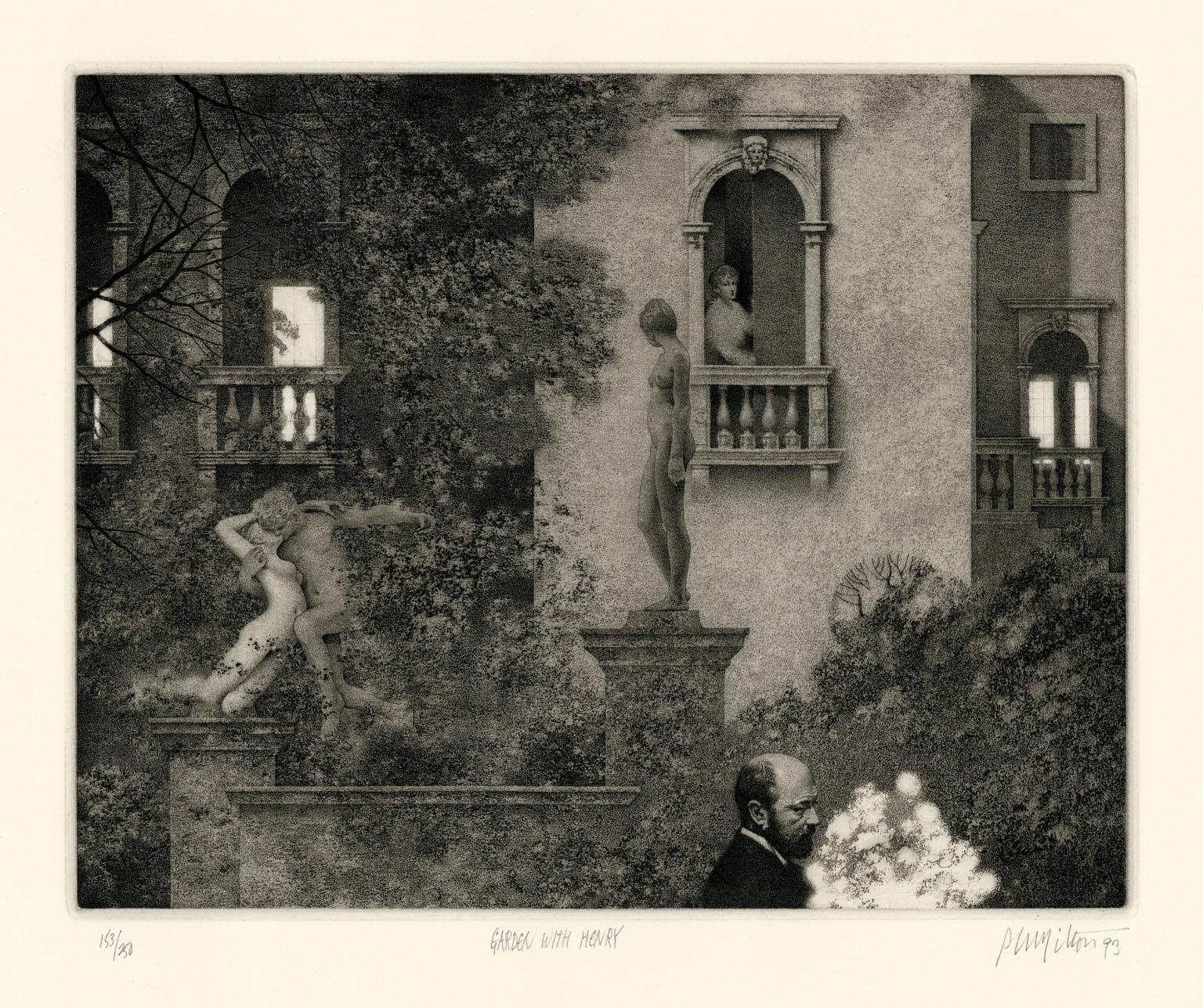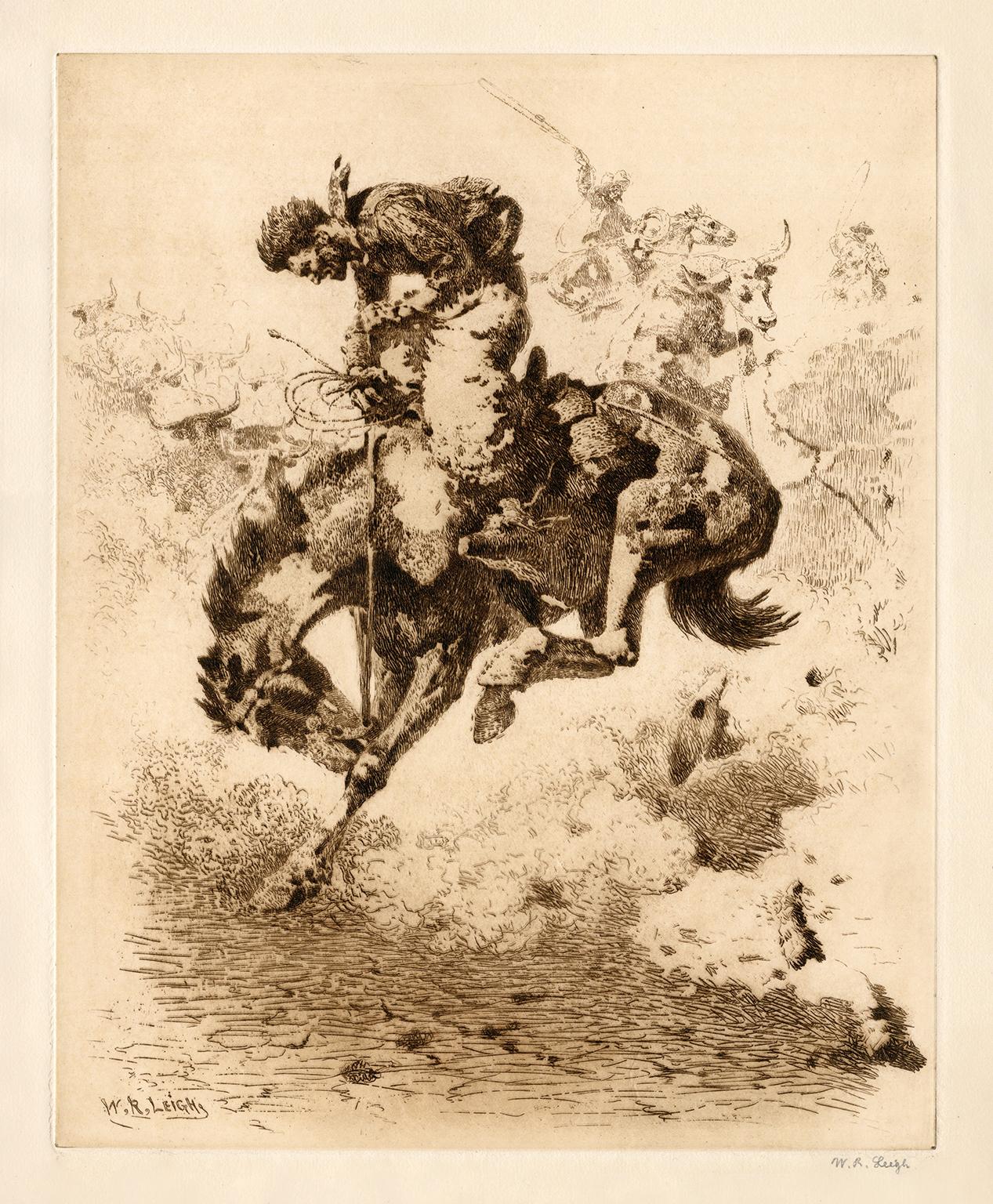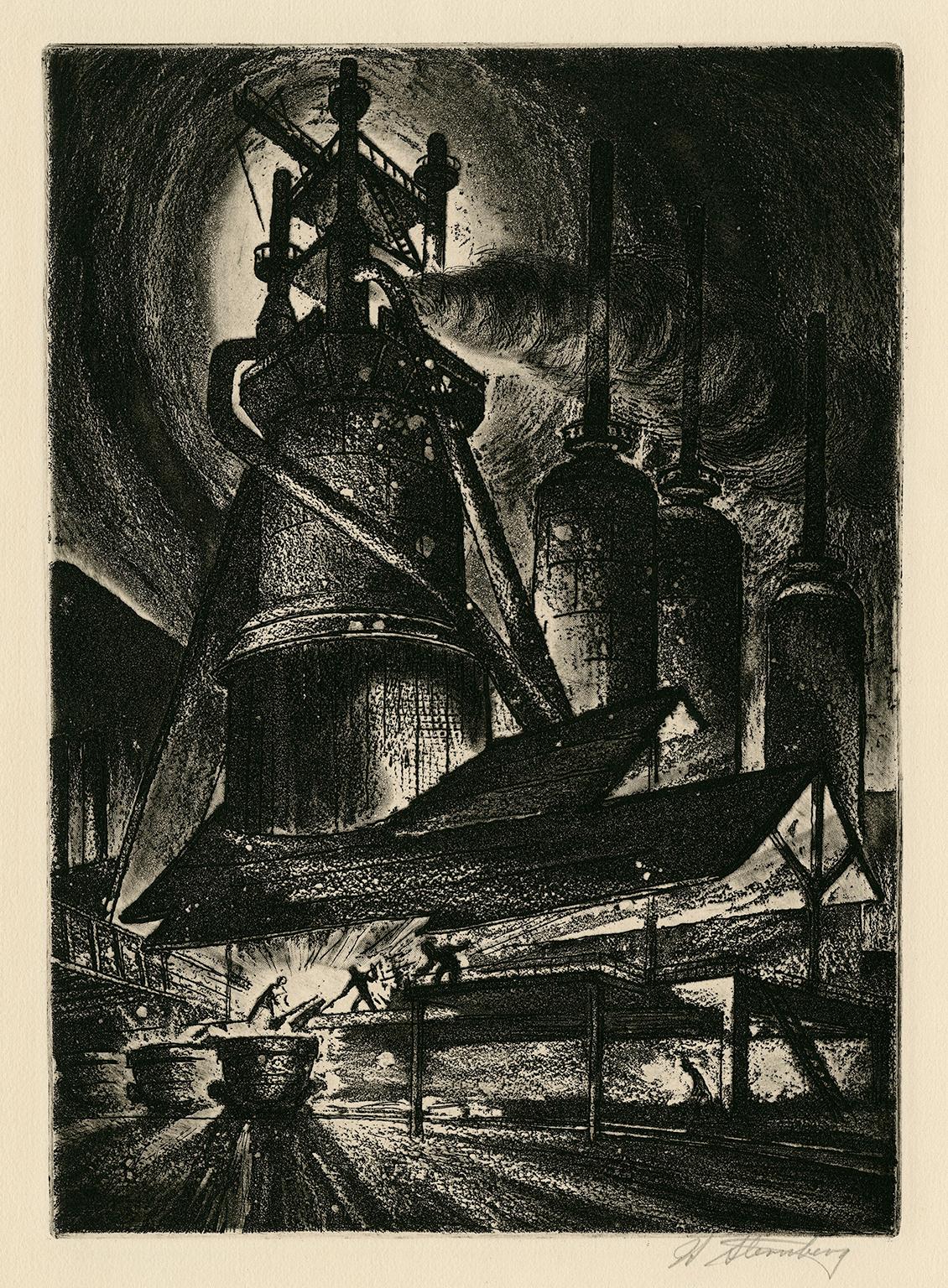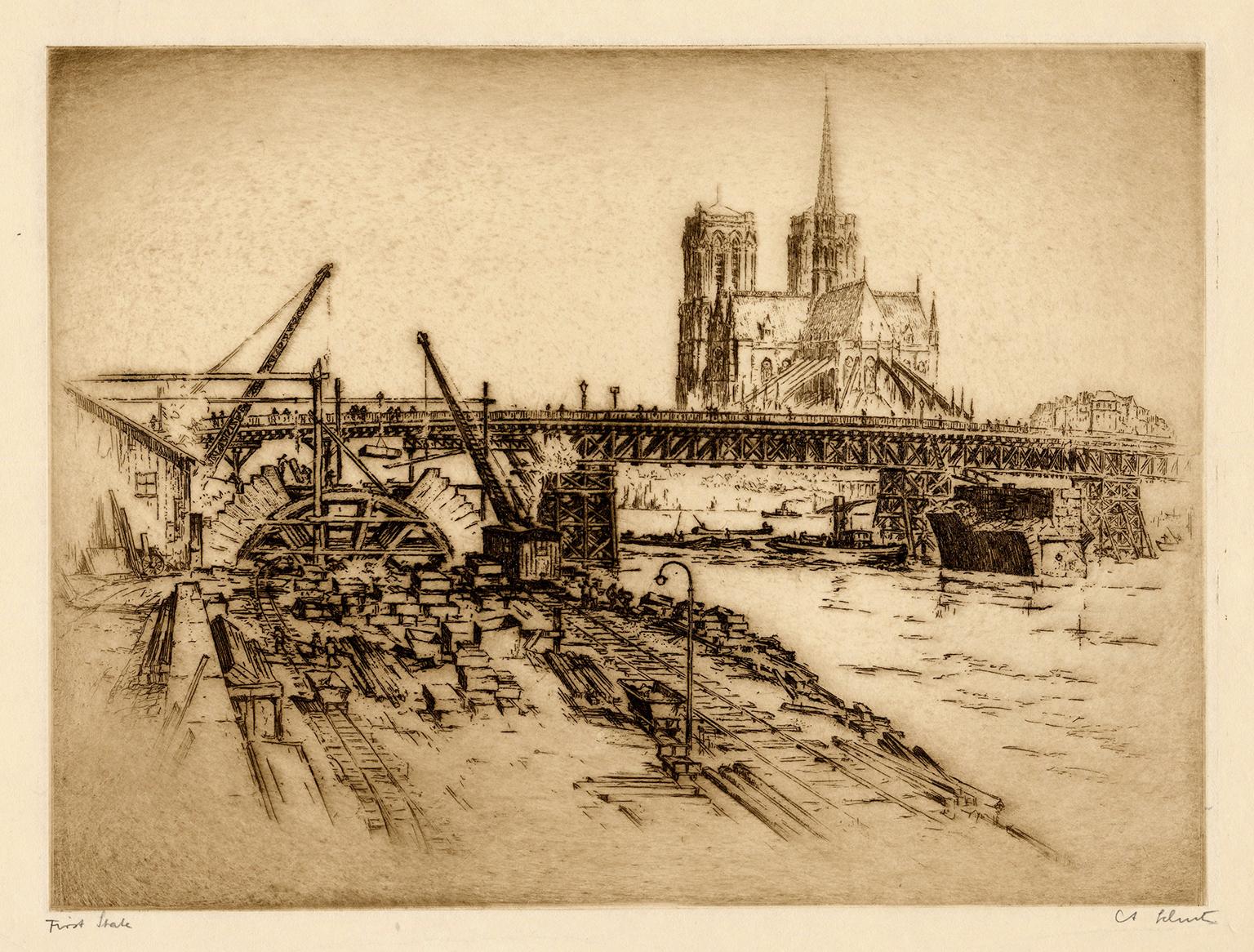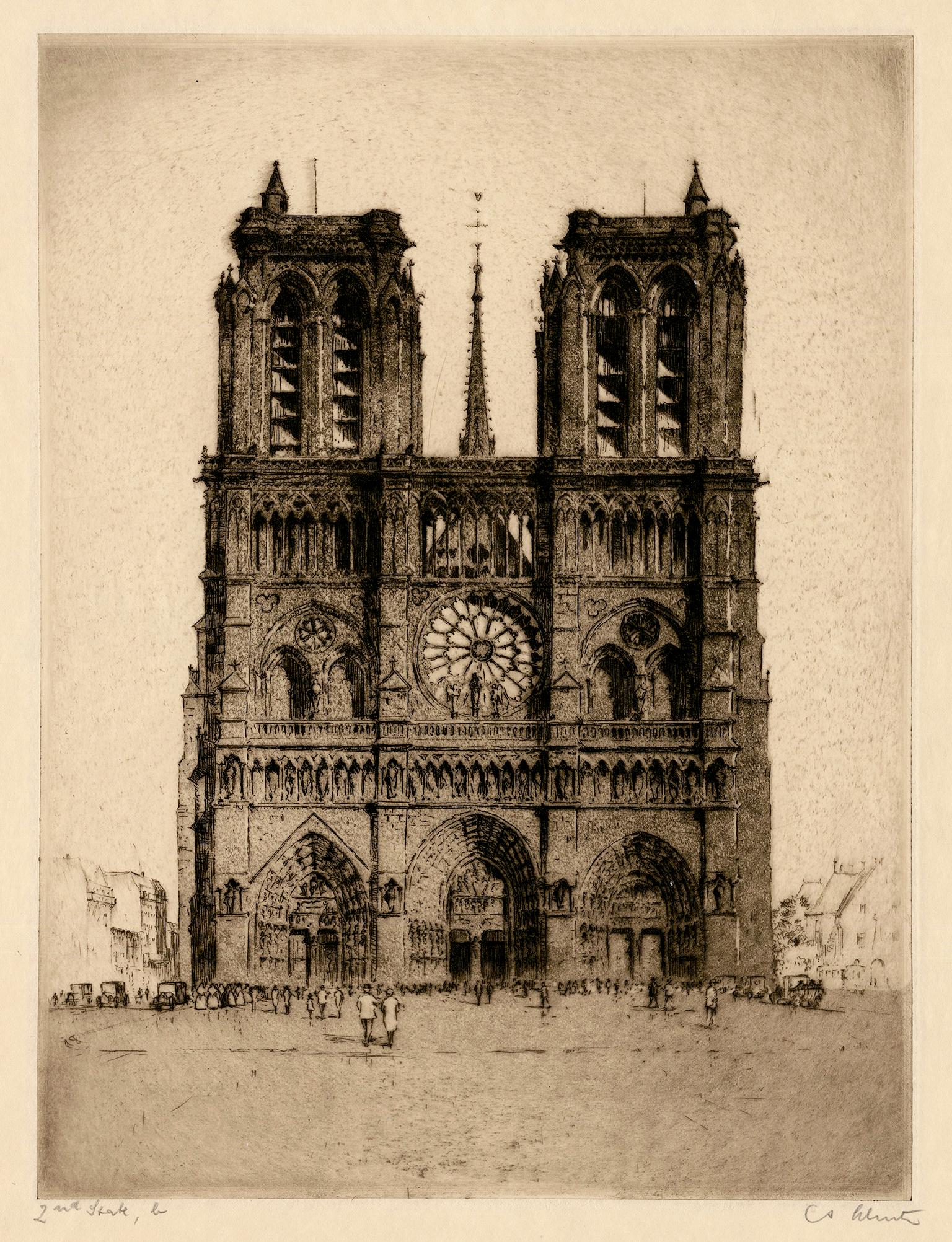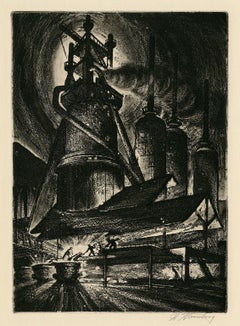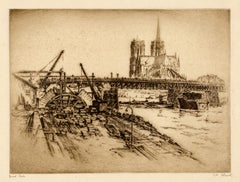Yosemite Valley, El Capitan
View Similar Items
Want more images or videos?
Request additional images or videos from the seller
1 of 9
Josef EidenbergerYosemite Valley, El Capitanc.1975
c.1975
$575List Price
About the Item
- Creator:Josef Eidenberger (1899 - 1991, Austrian)
- Creation Year:c.1975
- Dimensions:Height: 21 in (53.34 cm)Width: 15 in (38.1 cm)Depth: 0.01 in (0.26 mm)
- Medium:
- Movement & Style:
- Period:
- Condition:
- Gallery Location:San Francisco, CA
- Reference Number:Seller: eid/yos/cap/011stDibs: LU66637177212
Josef Eidenberger
Born 1899 in the little town of Goisern, Austria, Josef Eidenberger began his artistic career as a landscape painter, showing great perception for the mood of the local countryside. In 1923 he enrolled in the famed Graphic Academy of art in Vienna, and studied under Professor Alfred Cossman. Starting with copper engraving*, Eidenberger soon turned to etching as a medium. His specialized studies and love for subtle color led him to the complicated process of color etching*. Greatly influenced by the Austrian etcher Luigi Kasimir, Eidenberger improved his technique from plate to plate. His eye for detail and meticulous execution of each plate has brought him many commissions from city officials and members of the business communities throughout Europe, especially in Austria and Germany. In December of 1977, the Austrian government bestowed upon Eidenberger the honorary title of Professor of the Arts in appreciation for his contribution to the advancement of fine arts.
About the Seller
5.0
Platinum Seller
Premium sellers with a 4.7+ rating and 24-hour response times
Established in 1999
1stDibs seller since 2017
804 sales on 1stDibs
Typical response time: 1 hour
Authenticity Guarantee
In the unlikely event there’s an issue with an item’s authenticity, contact us within 1 year for a full refund. DetailsMoney-Back Guarantee
If your item is not as described, is damaged in transit, or does not arrive, contact us within 7 days for a full refund. Details24-Hour Cancellation
You have a 24-hour grace period in which to reconsider your purchase, with no questions asked.Vetted Professional Sellers
Our world-class sellers must adhere to strict standards for service and quality, maintaining the integrity of our listings.Price-Match Guarantee
If you find that a seller listed the same item for a lower price elsewhere, we’ll match it.Trusted Global Delivery
Our best-in-class carrier network provides specialized shipping options worldwide, including custom delivery.More From This Seller
View AllStreet with Church
By Luigi Kasimir
Located in San Francisco, CA
This artwork "Street with Church" c.1925 is an original color etching by Austrian artist Luigi Kasimir 1881-1962. It is hand signed in pencil by the artist at the lower center. The p...
Category
Early 20th Century Realist Figurative Prints
Materials
Etching
Duke of Gloucester Street, Willamsburg
Located in San Francisco, CA
This artwork titled " Duke of Gloucester Street, Willamsburg" c. 1970 Is an original etching on paper by noted American artist Leonard H. Mersky, 1917-1994. It is signed, titled and numbered 56/200 in pencil by the artist. The size of the plate mark (image) is 6.75 x 7.75 inches, framed size is 15.15 x 16.15 inches. The artwork is in excellent condition, the frame is in good condition, it has minor dents.
About the artist.
Born in Boston in 1917, Leonard Mersky...
Category
Late 20th Century Realist Landscape Prints
Materials
Etching
Raleigh Tavern, Williamsburg, VA
Located in San Francisco, CA
This artwork titled "Raleigh Tavern, Williamsburg, VA" c. 1970 Is an original etching on paper by noted American artist Leonard H. Mersky, 1917-1994. It is signed, titled and numbered 13/300 in pencil by the artist. The size of the plate mark (image) is 7 x 8 inches, framed size is 15.15 x 16.15 inches. The artwork is in excellent condition, the frame is in good condition, it has minor dents.
About the artist.
Born in Boston in 1917, Leonard Mersky...
Category
Late 20th Century Realist Landscape Prints
Materials
Etching
Saint Moritz, Switzerland
By Luigi Kasimir
Located in San Francisco, CA
This artwork titled "Saint Moritz, Switzerland" 1922 is an original color etching by Austrian artist Luigi Kasimir 1881-1962. It is hand signed in pencil at the lower center by the ...
Category
Early 20th Century Realist Figurative Prints
Materials
Etching
Salzburg Main Square
Located in San Francisco, CA
This artwork titled "Salzburg Main Square" c.1935 is an original color etching by Austrian/American artist Tana Kasimir Hoernes, 1887-1972. It is hand signed in pencil by the artist....
Category
Mid-20th Century Realist Figurative Prints
Materials
Etching
Winter Landscape
By Hans Figura
Located in San Francisco, CA
Artist: Hans Figura (Austrian, 1898-1978)
Title: Winter Landscape
Year: Circa 1950
Medium: Color etching with aquatint on silk
Edition: Unknown
Plate mark (Image) size: 17.25 x 13.75 inches
Framed size: 23 x 19.5 inches
Signature: Hand signed in pencil by the artist
Condition: very good
Frame: Custom framed in a silver and gold frame
About the artist.
Hans Figura (Austrian, 1898-1978) was a noted painter and etcher, who was well known for his aquatint etchings on paper or satin of European and American landscape and cityscape scenes, as well as paintings of landscape and cityscape scenes, Tyrolean Alp scenes of villages and chalets, street scenes, harbor and marine scenes.
Hans Figura was born January 22, 1898, in the small town of Nagy-Kikinda near the Austro-Hungarian border, to Austrian parents. His father was a railway official and he spent his childhood in various small villages along the railway line between Vienna and Hungary. He graduated from the highschool in Vienna and also studied at the Higher Graphical Federal Education and Research Institute, a vocational school there (Höhere Graphische Bundes-Lehr und Versuchsanstalt)
As a young man, he served as an officer in the Austrian Army during WWI from 1916-18 on the Russian and Italian fronts. After the war he attended medical school at the University of Vienna for several years beginning in 1918, and seven semesters later, he passed his first state exam, but eventually decided that he preferred the arts to medicine. He also studied at the Academy of Fine Arts in Vienna (Akademie der bildenden Künste Wien) and by 1922 he had devoted himself to painting and etching, while also working in other artistic printing mediums, batik, illustration, bookbinding and working with leather.
From 1923-28, Figura made numerous art study trips throughout Europe including; Germany, Italy, France, Belgium, Holland, England, Czechoslovakia and Hungary. His first major success came in 1924, when he won acclaim for his etchings exhibited in Italy and the United States. In 1929, he visited the United States and in 1930, he traveled back to France, Holland and also Switzerland. During this time, Figura maintained studios in both New York City and Vienna, Austria. Throughout the course of his career, he exhibited his paintings and prints in many of the large cities throughout Europe and the United States and many of his etchings and paintings were acquired by museums and galleries, including The Kulturamt, Vienna, Austria; the Landesmuseum of Lower Austria; as well as The Society of Art Lovers, Berlin and Munich.
Select Exhibitions:
1924- Exhibitions in Italy and the United States.
Circa Mid 1920's-1939- All the exhibitions at the Kunstlerhaus, Vienna, Austria.
1926- "Secession...
Category
Mid-20th Century Realist Landscape Prints
Materials
Etching
You May Also Like
Garden with Henry
By Peter Milton
Located in New York, NY
Peter Milton created this etching and engraving entitled “GARDEN WITH HENRY” in 1993. It is signed, titled, dated, and inscribed “153/250” in pencil under the image. The printed image size is 9.5 x 12 inches and the paper size is 15.5 x 18 inches. The inspiration for this piece came from the Henry James novella “The Aspern Papers” and clearly depicts the Venetian setting. The American-British author Henry James (1843-1916) wrote “The Aspern Papers” first published in 1888.
Peter Milton was born in Pennsylvania in 1930. He studied for two years at the Virginia Military Institute...
Category
1990s Realist Landscape Prints
Materials
Engraving, Etching
'Foul Rope (Left)' — Early American Southwest Rodeo
By William Robinson Leigh
Located in Myrtle Beach, SC
William Robinson Leigh, 'Foul Rope (Left)', etching, c. 1920, edition unknown but small. Signed in pencil and signed in the plate, lower left. A superb, richly-inked impression, in dark brown ink, on buff wove Umbria paper, the full sheet with margins (1 1/2 to 2 3/4 inches); slight toning at the sheet edges, otherwise in excellent condition. Very scarce. Archivally matted to museum standards, unframed.
Image size 14 7/8 x 11 15/16 inches (378 x 303 mm); sheet size 20 3/8 x 15 3/8 inches (518 x 391 mm).
ABOUT THE ARTIST
Born near Falling Waters, West Virginia, on a plantation a year after the Civil War and raised in Baltimore, William Robinson Leigh (1866 - 1955) became one of the foremost painters of the American West. His career spanning some seventy-five years, Leigh created some of the most iconic depictions of the Western landscape, with admirers referring to him as ‘The Sagebrush Rembrandt.’
The son of impoverished Southern aristocrats, Leigh received his first art training at age 14 from Hugh Newell at the Maryland Institute, where he was regarded as the best student in his class. From 1883 to 1895, he studied in Europe, mainly at the Royal Academy in Munich with Ludwig Loefftz. From 1891 to 1896, he painted six cycloramas or murals in the round, a giant German panorama.
In 1896, Leigh began working as a magazine illustrator for Scribner's and Collier's Weekly Magazine in New York City. He also painted portraits, landscapes, and genre scenes.
Leigh's trips to the Southwest began in 1906 when he agreed to paint the Grand Canyon with William Simpson, Santa Fe Railway advertising manager, in exchange for free transportation West. In 1907, he completed his Grand Canyon painting, which led to more commissions and an extensive painting trip through Arizona and New Mexico. These travels inspired him to paint western subjects for the next 50 years, and his primary interests were the Hopi and Navajo Indians.
In 1910, he traveled to Wyoming, where he painted in Yellowstone Park and created sketches, many of which he later converted into large canvases such as ‘Lower Falls of the Yellowstone’ (1915) and ‘Grand Canyon of the Yellowstone’ (1911).
In 1926, he traveled to Africa at the invitation of Carl Akeley for the American Museum of Natural History, and from this experience, wrote and illustrated 'Frontiers of Enchantment: An Artist's Adventures in Africa'. In 1933, he wrote and illustrated 'The Western Pony'. His adventures were chronicled in several popular magazines, including Life, the Saturday Evening Post, and Colliers.
For many years, Grand Central Art Galleries at the Biltmore Hotel handled his work exclusively in New York. In 1953, Leigh was elected an associate member of the National Academy of Design and became a full Academician in 1955.
In March 1999, the Historical Center of Cody, Wyoming, held an exhibition of his field sketches and finished works depicting his experiences near Cody early in the century. Between 1910 and 1921, when he often painted in the Carter Mountain vicinity, these years were considered pivotal to his artistic development and devotion to the Western landscape.
Leigh's work is held in many museum collections of American Western art...
Category
1920s Realist Animal Prints
Materials
Etching
'Blast Furnace #1' — Mid-Century American Modernism
By Harry Sternberg
Located in Myrtle Beach, SC
Harry Sternberg, 'Blast Furnace #1', etching, aquatint and roulette, 1946, edition 250, Moore 147. Signed in pencil. A superb, richly-inked impression, w...
Category
1940s Realist Figurative Prints
Materials
Etching, Aquatint
'L' Abside de Notre Dame' — Vintage 1920s Paris, Realism
By Anton Schutz
Located in Myrtle Beach, SC
Anton Schutz, 'L' Abside de Notre Dame' (The Apse of Notre Dame), etching, 1st state, c. 1927. Signed, titled, and annotated 'First State', in pencil. A supe...
Category
1920s Realist Figurative Prints
Materials
Etching
'Notre-Dame, Paris' — Historic French Gothic Cathedral
By Anton Schutz
Located in Myrtle Beach, SC
Anton Schutz, 'Notre Dame, Paris', etching, 2nd state, 1927. Signed, titled, and annotated '2nd State', in pencil. Signed and dated in the plate, lower left. A superb, richly-inked...
Category
1920s Realist Figurative Prints
Materials
Etching
Broadway from the Bowling Green, 1828 — early New York City, hand-coloring
Located in Myrtle Beach, SC
J. R. Hutchinson, 'Broadway from the Bowling Green, 1828', hand-colored etching, 1828. Signed and dated in the plate, beneath the image, lower right. Ann...
Category
1820s Realist Figurative Prints
Materials
Etching
